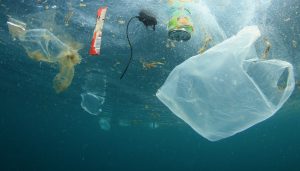No mountain high enough: study finds plastic in ‘clean’ air
From Mount Everest to the Mariana Trench, microplastics are everywhere – even high in the Earth’s troposphere where wind speeds allow them to travel vast distances, a new study has found.
Microplastics are tiny fragments – measuring less than 5mm – that come from packaging, clothing, vehicles and other sources and have been detected on land, in water and in the air.
Scientists from the French national research institute CNRS sampled air 2,877 metres above sea level at the Pic du Midi Observatory in the French Pyrenees, a so-called “clean station” because of the limited influence exerted on it by the local climate and environment.
There they tested 10,000 cubic metres of air a week between June and October of 2017 and found all samples contained microplastics.
Using weather data, they calculated the trajectories of different air masses preceding each sample and discovered sources as far away as north Africa and North America.
The study’s main author, Steve Allen of Dalhousie University in Canada, told AFP that the particles were able to travel such distances because they were able to reach great altitudes.
“Once it hits the troposphere, it’s like a superfast highway,” he said.
The research also points to microplastic sources in the Mediterranean Sea and the Atlantic Ocean.
“The marine source is the most interesting,” Allen said.
“Plastic leaving the ocean into the air that high – it shows there is no eventual sink for this plastic. It’s just moving around and around in an indefinite cycle.”



